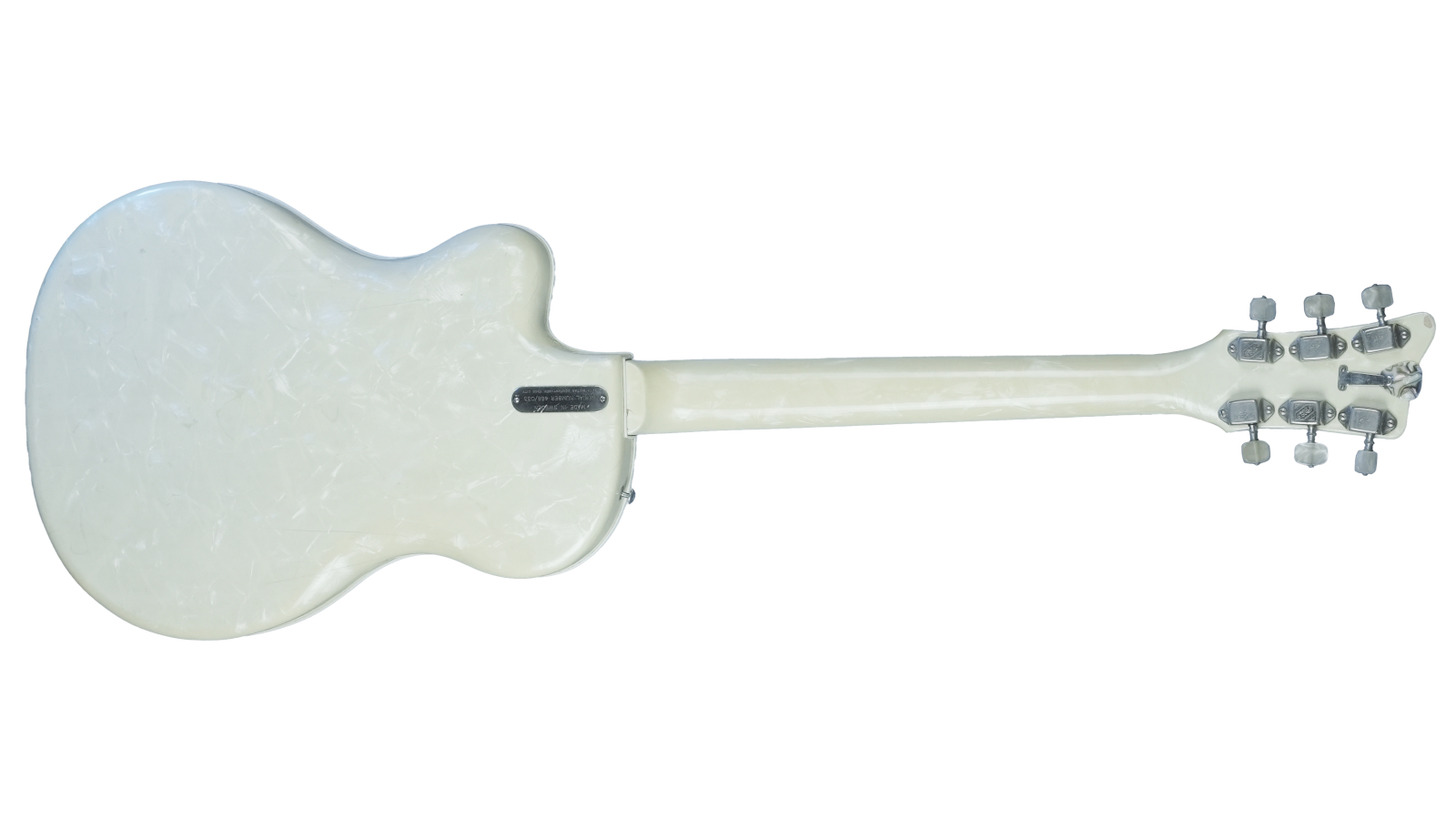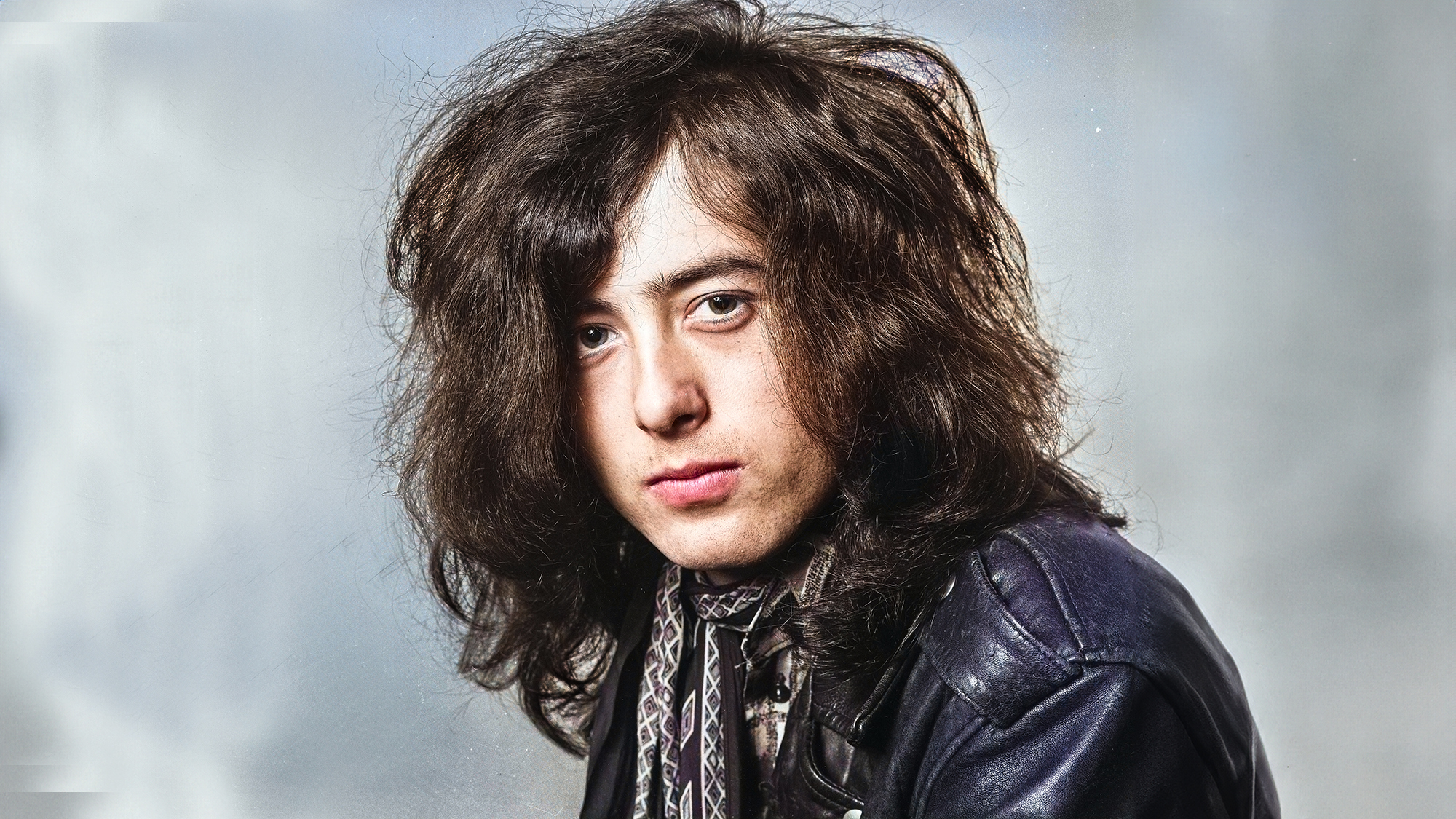What’s Old, Covered in Sparkly Plastic and Sounds Like a Dream? This 1961 Goya S90 by Hagstrom
An early pioneer in the history of European electrics, this funky axe sounds as good, if not better, than it looks!

If guitars could have identity crises, the Goya S90 might qualify for one. It was made in Sweden by Hagstrom, given a Spanish name and sold in the United States. Not only that, it’s shaped like a venerable Les Paul and covered in flashy plastics, including a blue sparkle face and a complete wrap of white “mother of toilet seat” pearloid on the back, sides, neck, headstock and fingerboard.
Fewer than 200 of these guitars were made during the model’s early 1960s run. Like some other European instrument manufacturers, Hagstrom was known primarily as a maker of accordions. But with the late-’50s guitar boom, the company retooled its plant to include production of electric guitars, hence the use of the otherwise garish plastics and pushbuttons found in these early builds.
Weirdo Factor
While its shape would have been familiar to guitarists of the period, its aesthetics were as wild then as they are now.

Playability and Sound
With all that said, this 1961 example plays like a dream. The slim, 22-fret neck has a clear Lucite fingerboard and is smooth to the touch, making for fast and easy playing. The electronics, you may notice, are all attached to a chrome unit that contains the pickups and controls. What’s surprising is that the electronics unit was actually swappable! You could choose from two single-coils, as seen here, two humbuckers, or one single-coil.
As for its sound, this guitar does it all, from chimey to growly, and from warm to skinny. It’s almost weird how cool, varied and unique the tones are. The pickup button matrix provides the obvious choices – neck, bridge or both – but there is also a solo button that acts as a boost (although it may just be a tone bypass) and a kill button.
In addition, there are three roller controls: two for volume and one for global tone. The height of the bridge is adjustable, the saddles are fully intonatable, and the enclosed tuners work quite smoothly and have beautiful fancy engravings on their casings. Their translucent buttons complete the overall plastic aesthetic. Plus, there’s a pick holder on the headstock’s back!


Value
In addition to being made in few numbers, surviving Goya S90 examples are having difficulty standing the test of time due to the materials used in the build. This example suffers from plastics shrinkage, not good for a guitar entirely wrapped in the material. Ardy, my luthier, was able to splice in pieces, re-glue others and use paint to fill in the gaps.
All the latest guitar news, interviews, lessons, reviews, deals and more, direct to your inbox!
In 1961 the S90 sold new for just over a hundred bucks. Today, this guitar in this condition would set you back around $4,000
In addition, the chambered body is actually made from thin plys of what Ardy referred to as particle board. I got mine cheaply because the tailpiece had pulled so far off the top that the action was more like that of a lap steel guitar!
As for what you might pay, consider that in 1961 the S90 sold new for just over a hundred bucks. Today, this guitar in this condition would set you back around $4,000. I’ve seen a few selling online for about half that, but most are in bad shape – fixable, perhaps, but not easily.
If you have your heart set on one, pay particular attention to the condition of the plastics and the angle of the bridge, and know that you’ll probably almost double your investment getting it up into playing condition. Am I glad that I did? Abso-fricken-lutely.
Why It Rules
The Goya S90 was an early pioneer in the history of European electrics, and it sounds as good, if not better, than it looks!
My great thanks to Hagstrom (hagstrom-vintage-guitars.se) for making such a terrific guitar, and to my pal Ardy, who brought this one back from the dead!
Got a whack job? Feel free to get in touch with me at rtcarleton@gmail.com. Who knows? Maybe I’ll write about it!
